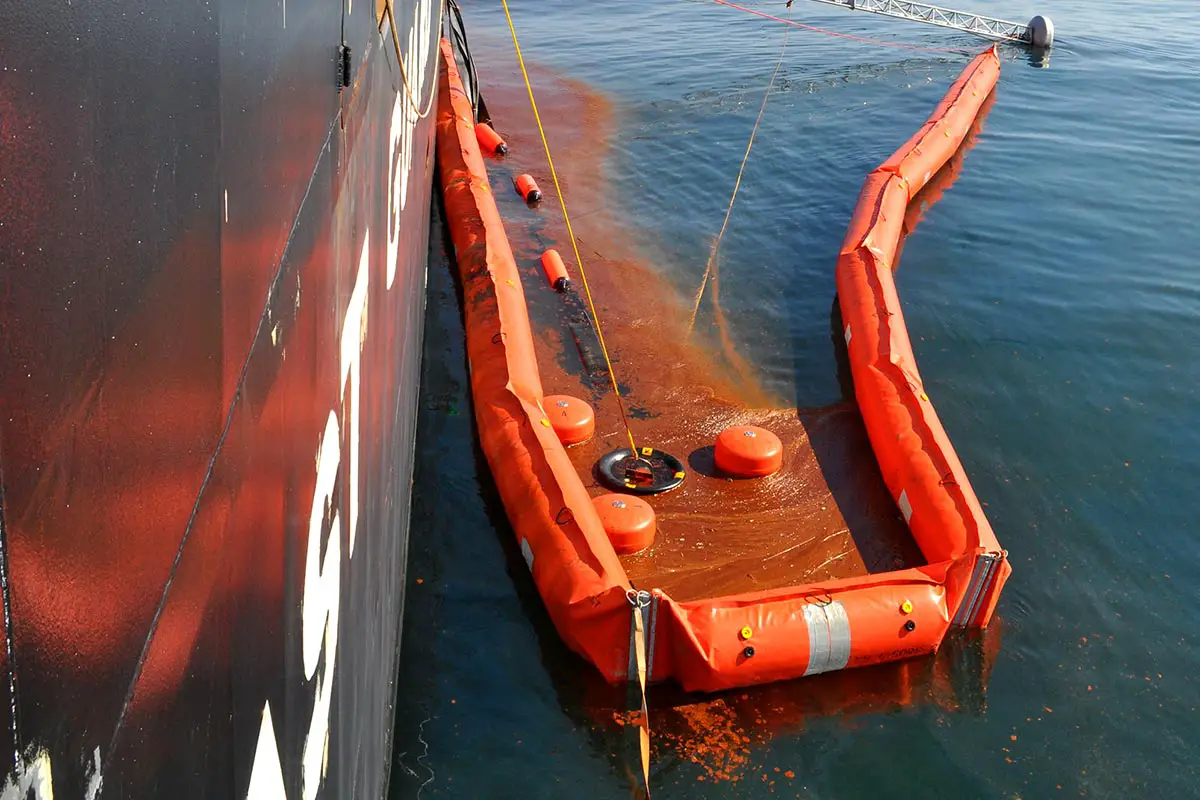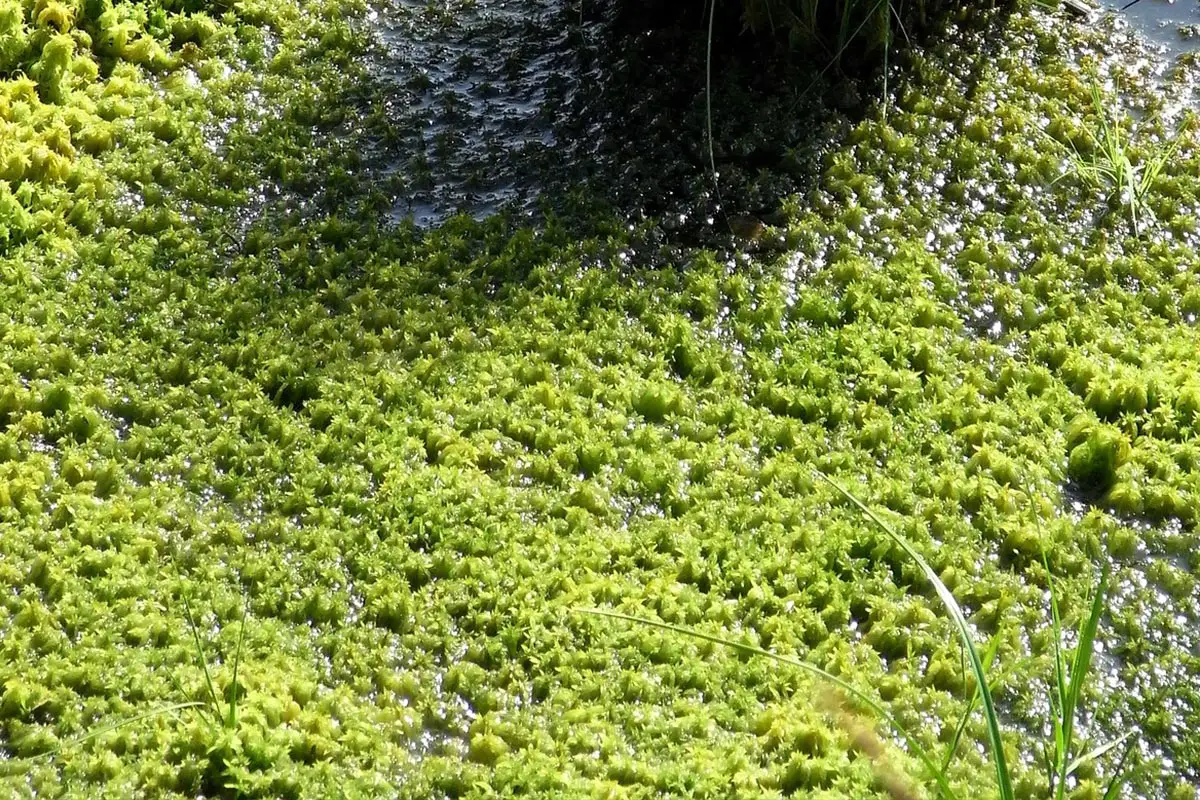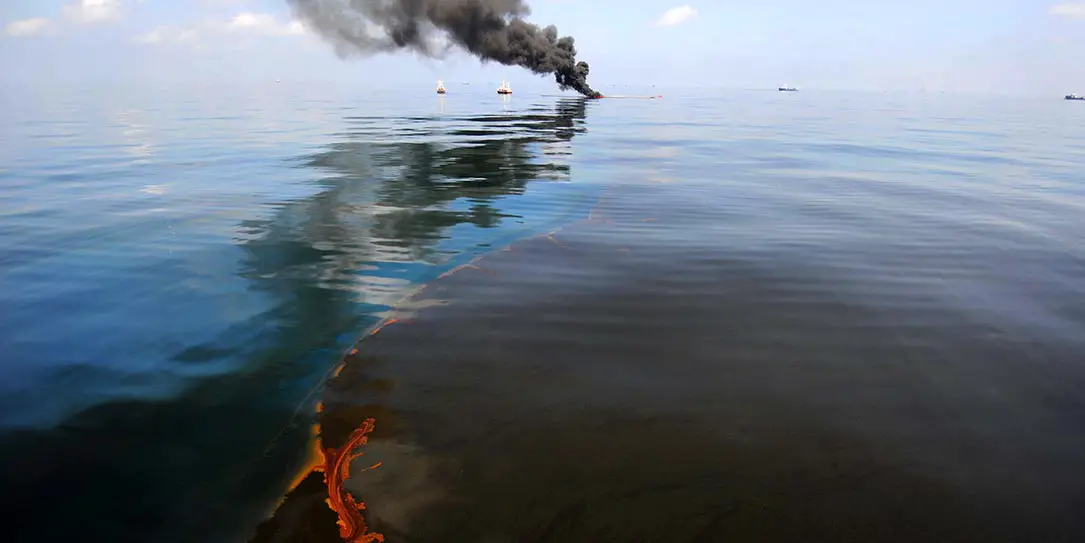What Chemicals Are Used For Clean Up Of Polymer Spill
Oil spills are dangerous for everyone involved. From workers to sea life, these spills spread speedily and are hard to contain. However, engineering science progresses every 24-hour interval, and innovations that tin can aid are coming along.
Like many, you may remember the catastrophic BP Deepwater Horizon oil spill in 2010. It's one of the largest oil disasters in history, spilling effectually four one thousand thousand barrels over 87 days. Even so why did it have so long to contain? Many bug occurred at Deepwater Horizon, one of them being the lack of technology available for utilise. This setback led to an extensive trouble that lasted nearly five months, and the effects of the spill are still credible.
Effects of oil spills
Oil spills can be deadly in a number of means. A blowout or oil rig explosion may injure the workers or worse. Plus, the ecology impacts affect wildlife both in and out of water. Oil spills straight affect sea life every bit it pollutes the water and makes it unlivable for all animals. It likewise affects creatures like birds that sit on the surface and can go trapped in the viscous substance.
These disasters compromise environments, and people and animals that rely on the ecosystems volition have difficulty living and adjusting to the oil in their water supply, crops, food and more. As a preventative measure, identifying critical factors for a spill can help subtract these bug.
Oil is a toxic substance, so having the applied science to prevent or clean upward quickly after spills is essential. A rapid response is key to minimizing injuries and destruction. In recent years, experts have been developing amend tech to combat this consequence.
Applied science for cleaning up oil spills
The following seven innovations have been in evolution for years. Experts take tested and seen the success of some, while others have potential for the future.
Sponges
Sponges are proving to exist a powerful resource when it comes to cleaning up oil spills. 1 example is a behemothic dirt sponge which, when placed in fresh or saltwater, can suck upwards the oil equally liquid flows through. Experts mix a polymer and air with clay to get the final upshot.
Some other pick is the Oleo Sponge, which does the same every bit the clay version — soaks upwardly the oil and leaves backside the h2o. What appears every bit a standard sponge uses polyurethane to dispense the chemistry of the oil and so absorb it.
These contraptions are critical because they tin get the oil that's beneath the surface of the water, which is typically harder to clean upwards.
Booms and Skimmers

Booms are floating barriers that stop the oil from spreading. When waves get too rough, though, the oil tin can escape these devices and spread regardless. A skimmer is an object that collects and removes oil from the surface. However, it runs into the same problem equally booms when facing rough conditions.
New tech similar Wendy Schmidt'due south butt skimmer projection can assist with these issues. This skimmer can operate in rough waves while still separating oil and water. With information technology, experts could clean upward the surface oil no matter the weather condition weather. It can monitor the perimeter of booms, too, in order to collect any oil that escapes.
Dispersants
A tactic that experts commonly use during spills is spraying chemical dispersants on the oil. This method comes with pros and cons, though. The dispersants suspension up the oil efficiently, similar detergent that experts apply to make clean residue off of animals. Even so some dispersants tin exist harmful.
The chemicals conduct the oil down deeper into the sea, exposing other animals to both the oil and the potentially harmful ingredients. It doesn't easily biodegrade, either, so some experts believe that using dispersants can worsen the overall effects of a spill.
All the same, engineering science has helped scientists develop non-toxic alternatives to chemical dispersants similar Triple7 BioConcentrate. This non-toxic cleaner is tough on all oils and isn't harmful to marine life or the environment. A development like this volition go a long style during a disaster.
Magnetic Soap
The soap experts used to clean the Deepwater Horizon oil spill had toxic dispersants in it that don't biodegrade and can impairment wildlife. All the same, scientists from the Academy of Bristol developed an idea to get rid of chemicals in the soap and instead arrive magnetic. This product would work past interacting with the oil during a spill. In one case the magnetism hits the substance, they would both rise to the surface.
This concept would make it easier for experts to make clean the contaminated water right from the surface. Information technology also reduces the need for dispersants or adding harmful chemicals to the water.
Peat Moss

Peat moss is another unsuspecting resource that can effectively assist make clean spills. Scientists in Kingdom of norway discovered that this textile successfully absorbs oil.
The company Kallak Torvstrøfabrikk developed an absorbent for oil spills and tested it out to discover its power. On contact, the peat moss absorbs the oil and retains it without letting h2o penetrate or permeate through it. Once the oil is within, the peat moss maintains its texture without whatever stickiness, allowing experts to remove it from the water speedily.
Peat moss is 100% organic and proved itself to be a powerful resources when in crunch. In 2009, experts used it in an oil spill off the declension of Norway, and it worked successfully.
Flame Refluxer
At Worcester Polytechnic Institute, researchers developed a tool helpful in burning oil, the Flame Refluxer. Burning on the ocean surface is a common tactic that helps quickly get rid of oil. Withal, it does give off diverse harmful emissions in the process. The Flame Refluxer is working to combat these problems. The device burns faster and hotter than most fires, speeding the process up.
This inexpensive tool sits on top of a spill every bit its coils react with the oil to start a fire. The device control fires and reduces smoke and tar-like residue from the burnt substance. Developers hope information technology will as well mitigate any harmful emissions the fires give off.
Blowout preventers
A blowout preventer (BOP) does as the name implies — works to prevent a blowout from happening. Information technology monitors oil wells during production and seals or controls them during instances of a potential issue. Still, as you can see with Deepwater Horizon, the BOP did non work, and the oil rig nonetheless blew.
With new technology like Deepwater Subsea, though, oil rigs have improve analytics, BOP force per unit area testing and more than. This system provides workers with improved tools to monitor and control BOPs. This engineering science tin altogether forbid the need for an oil cleanup when the BOP never fails.
Applied science and the future of oil spills
As long as humans go along to use oil, the possibility of spills exists. However, preventing and cleaning upwardly after these disasters can go easier with improved engineering.
What practice you think nearly some of the contempo advances in technology that help prevent and clean up oil spills? Allow usa know in the comments below or on Twitter, Facebook, or MeWe.
Final Updated on February 3, 2021.

What Chemicals Are Used For Clean Up Of Polymer Spill,
Source: https://techaeris.com/2020/03/14/technology-used-clean-up-oil-spills/
Posted by: summersares1952.blogspot.com


0 Response to "What Chemicals Are Used For Clean Up Of Polymer Spill"
Post a Comment